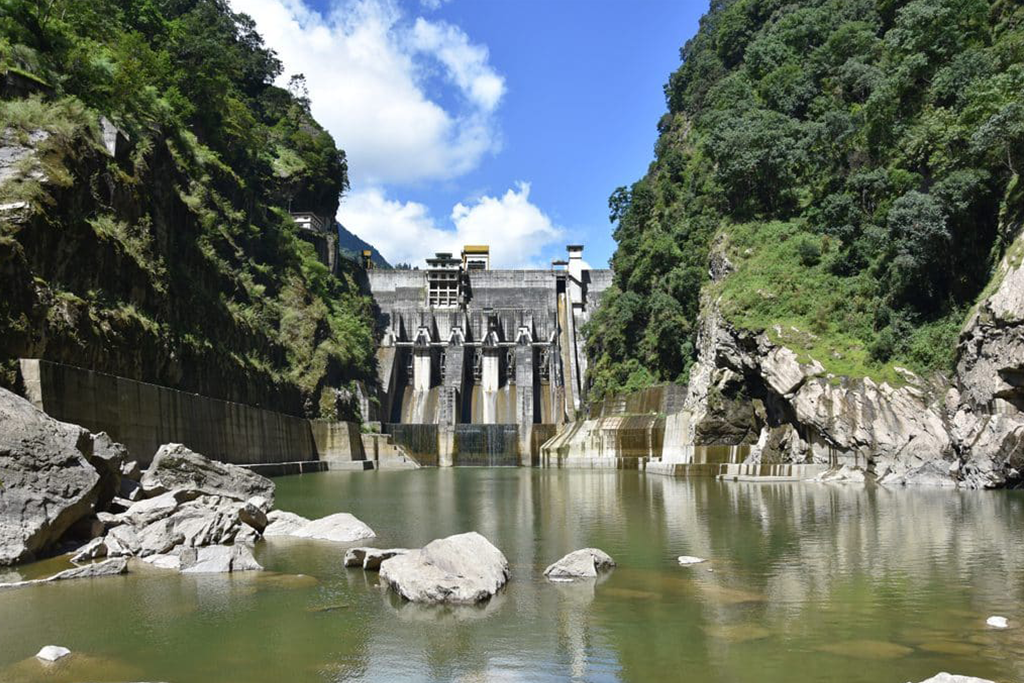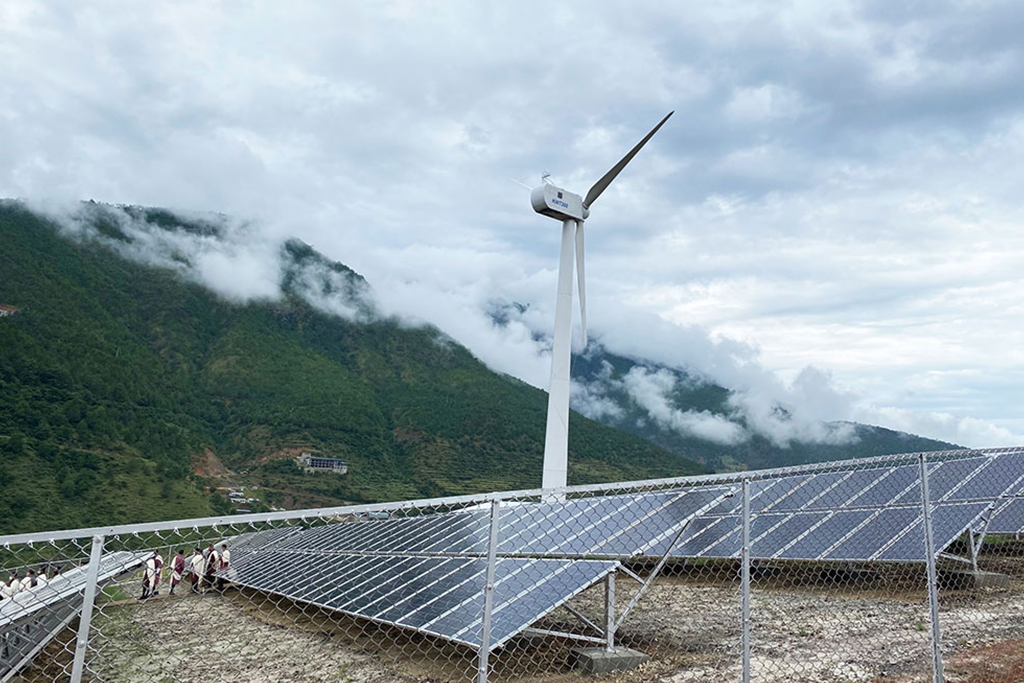The Bhutanese | Tenzing Lamsang | September 16, 2023
Until recently, the eight-member expert committee that had been set up by Bhutan and the Government of India (GoI) were unable to agree on the future course of the 1,200 MW Punatsangchu-I, with the Bhutanese side insisting on a barrage due to safety concerns over the dam site, and the Indian side insisting that the dam can be done at the dam site.
However, the Bhutanese side has now softened its stance and has agreed to do a set of geo technical investigations on the right bank area and the dam site near it.
The findings are to look at the geological conditions.
This was decided in a Technical Coordination Committee (TCC) meeting between the two sides recently.
Based on these geological conditions the next stage will be to see if a dam can be built there and also what are the additional stabilization measures that are required.
The Indian counterparts have been asked to come to Bhutan by the end of this month so that they go to the site and jointly decide where the additional geo technical investigation needs to take place. The study will determine the geological model.
The Punatsangchu Hydroelectric Project Authority (PHPA) meeting will soon take the final decisions on what are the studies based on the recommendation of the TCC.
One of the underlying reasons for the new studies is to test the theory of the Indian side that the Bhutanese side could have been using a wrong set of geological conditions.
However, the decision to give a relook at the dam is not entirely technical but also political in nature.
The feeling is that the stuck nature of the P I project has become an impediment not only to the project itself but is also sending out a negative message for cooperation in other areas.
The approach in this softer Bhutanese stance is to see if the Indian proposal for a dam on the same site is feasible, but also to ensure that proper studies are done, safety is ensured and that there are certain guarantees.
On the technical side the Ministry of Energy and Natural Resources and other Bhutanese counterparts have so far not been so keen on the dam proposal in the present condition of the right bank and have been pushing for the barrage.
However, the agreement to do the studies is a middle path taken by Bhutan.
A source said, “So the dam is not confirmed and barrage is not thrown away, but more or less the study is focusing to see if the dam can be done as there are already intake tunnels and everything is done and excavation is done for the dam. If the risk is equal to the barrage, then from the Bhutanese side there is no objection to do it. There should be no risk and they should be able to take any risk.”
The source said the dam is more favorable to the barrage from the Indian side and Bhutan has more or less agreed to the dam as long as the downstream safety, upstream safety, geological safety and the safety of the communities is assured.
One concern for Bhutan is that a lot of stabilization measures are done and the cost comes very high and so here the project should be able to pay the loan by itself.
“From our side they will have to do further geological investigation to make sure that it is stable and do counter measures. The current condition is not possible for us but they have said there is no more risk as the movement has stopped, but that should be assured with some more geological studies,” added the source.
The source said there has to be some conclusive geological studies and it has to be assured beyond doubt as the current conditions are not acceptable.
The Bhutanese side has so far insisted the shear zone or weakness is moving and continues to pose a risk while the India side believes the shear zone has come to the surface and stabilized.
The geological studies will consist of digging boreholes around 100 meters deep into the rocks to obtain the rock samples so that the geologists can study it.
The Bhutanese counterparts will be engaged in the studies too given what is at stake.
A nightmare scenario in the future is that a dam is built and then it fails after a few years wiping out P II project and settlements down stream in both Bhutan and India.
Another source said that discussions of what is to be done after the geological studies will take place at a later date.
This source said that as of now a decision is not taken but the dam at the original site is slightly better in terms of energy production and since they could not do it so far, it all depends on the study.
After geo technical investigation are over both sides will have to look at the possibility to stabilize the hill.
The source said the two government will have to sit down and see once the geological results come out.
After the geo technical investigations are done they have to decide on what are the measures that are necessary and whether it can be handled or not. A lot more questions will come after the studies.
Background
In 2008 the then PHPA MD R.N Khazanchi proposed to change the original dam site to generate more power which was agreed to by the then cabinet.
A Joint Audit Report of the two countries said the PHPA, its main consultant WAPCOS and CWC knew that there were geological weaknesses at the right bank area but still went ahead with the tendering of the dam.
Instead of conducting further investigations WAPCOS, issued a clearance for the project dam bids to be opened on 16th February 2009.
The problem made itself known with a major slide on the right bank in July 2013 which at the time WAPCOS and the civil consultant CWC said could be fixed with Nu 3.5 bn of mitigation measures. However, despite the measures another major slide happened in August 2016 and again despite additional mitigation measures the same area slid on 22nd January 2019. A total of Nu 4.85 bn spent on mitigation measures had failed.
After this, the government in the 21st PHPA Authority meeting in January 2019 insisted to the Indian consultants to come up with a comprehensive solution.
The report was submitted by CWC on 1st October 2019 and detailed drawings later in December of the same year.
One suggestion of the CWC was that the dam on the right bank side be constructed over 288 concrete piles driven into the ground to avoid excavating the shear zone below the right bank side
The Bhutanese side not very convinced with the idea of concrete piles under the dam for the long term and feeling the need for an overall review of CWC’s proposal called for a review in the TCC meeting
The National Hydro Power Corporation (NHPC) was then called upon to do a third party review of the WAPCOS and CWC proposal.
The NHPC in mid 2020 presented its review of the CWC report as a third party and disagreed with the CWC assessment and said it is not safe enough to build a dam.
The NHPC instead recommended to build a smaller structure in the form of a barrage 820 meters upstream of the current site.
The project authority asked the two companies with different findings to reconcile their contradictory findings. The two companies came back giving a factor of safety of 1.4 safe enough for a dam.
However, this called into question how the NHPC drastically changed its own stance and data to fit in with the CWC.
The government through DGPC hired a foreign company Stucky to do a review of the review which also showed the current site to be unsafe with a recommendation for a barrage.
If the dam is abandoned of the Nu 23 bn spent on it around half of the cost in other structures like the 4 large de-silting chambers and around 11 km of tunnels can be reused for the barrage.
The Indian side guided by WAPCOS continues to insist on the dam saying it is safe or enough mitigation measures can be taken while the Bhutanese side until now insisted on the barrage.
Nu 83 bn has been spent on the project so far.







